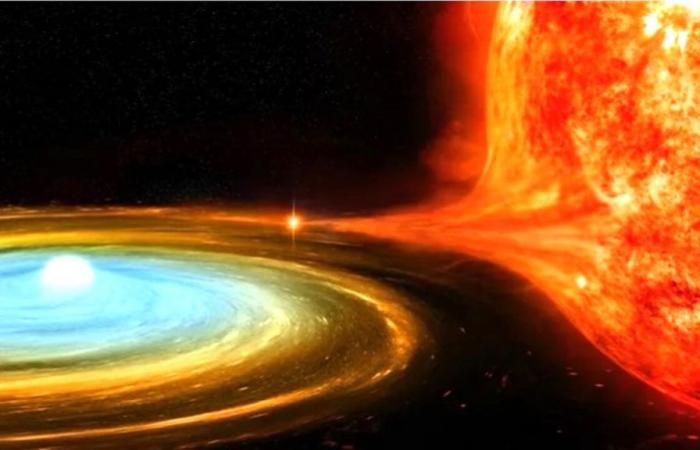For a few weeks we have been reading everywhere, especially on social media, that we will soon be witnessing a big one stellar explosion which will presumably become visible in September, after 80 years. “The phenomenon is described as an event not to be missed and very spectacular: but this is not the case, for this reason I intend to clarify.” The amateur astronomer enters into the matter Mirco Villi.
“The star in question is T Crb in the constellation of the Corona Borealis, clearly visible in the summer sky with its characteristic semicircular shape. To go into details, T Crb is made up of a binary system or two stars with these characteristics: a small white dwarf star of just a few hundred kilometers in diameter, but with a mass 1.2 times greater than that of ours Sun. By the way, the Sun will end its existence in a few billion years just like this, after having consumed all its hydrogen fuel. The surface temperature, in normal conditions, is around 10,000°C, its density is very high, as the matter is very compressed, to the point that 1 cm3 weighs approximately 1 ton, generating a strong gravitational field. Then a red giant star 70 times larger than the Sun, therefore with a diameter of around 100 million kilometers, whose luminosity exceeds that of our star by just under 700 times. The surface temperature is around 3500°C, while its mass, despite its size, is just 0.7 times that of the Sun, with a very low density of matter. Third, an accretion disk that has a diameter of just under 250 million kilometers. This disk envelops the entire system and is powered by hydrogen and helium gas which is torn from the red giant by the small but powerful white dwarf, thanks to its very strong gravitational field”, explains Villi.
“The two stars are separated from each other more or less like the Sun and the Earth, all about 3000 light years away from us. If you want to know how many kilometers there are, consider that one light year, rounding up a little, corresponds to approximately 10,000 billion kilometers which must be multiplied by 3000. The whole system rotates around a common center of gravity in just over 227 days. How does the explosion happen? The red giant transfers matter to the white dwarf, mainly hydrogen and helium, which accumulates on its surface until the temperature and pressure increase to the point of triggering the nuclear fusion of hydrogen into heavier elements, causing an explosion that releases large amounts of energy that make the star 200,000 times brighter than the Sun and it expels the external layers that have accumulated over time. The surface temperature of the white dwarf at the moment of the explosion is millions of degrees. Despite all this catastrophic event, the star is not destroyed and keeps its structure almost intact, ready for a new cycle which will lead to a new explosion after 80 years – clarifies the amateur astronomer -. After the explosion, the star remains visible to the naked eye for a few days, until it gradually returns to its initial situation in the following weeks, while remaining visible with good binoculars.”
“In our galaxy, the Milky Way, we know of only 10 stars that behave like T Crb, taking the name of “recurrent novae”, because they stand out from the other hundreds of novae that have shown these characteristics only once. In reality, many probably all novae are recurring, it’s just a matter of different times, compared to the 10 known. The term “nova” derives from the fact that in ancient times astronomers occasionally noticed a new star in the sky that did not exist before and which, at a later time,. became invisible again. The star T Crb was discovered in 1866, but apparently it was also observed in 1217 and 1787. The last sighting dates back to 1946. The event that we will have the opportunity to observe in the coming months is of great interest astrophysicist; however, for non-experts, essentially the general public, the phenomenon will go unnoticed, as it is true that it will reach a good brightness comparable to that of the Pole star, but I consider it very difficult for a curious person to identify the star in the sky night. Personally, I will organize an observing evening which will include other interesting astronomical objects, so that we can experience first-hand the realistic scale of the event”, he concludes.
Mirco Villi he is an amateur astronomer from Forlì who now lives in Cesenatico. Since he was a child he has studied the sky and for over 30 years he has been searching for extragalactic supernovae, initially with his own instruments, while now he uses a professional astronomical observatory in Arizona (USA) with which he studies and researches these explosive phenomena. To date he has discovered 281 extragalactic supernovae, thus making a good contribution to the search for these catastrophic phenomena. For his research and discoveries, the asteroid 34717 Mirkovilli (discovered by A.Boattini and L.Tesi) was dedicated to him by the International Astronomical Union which will bear his name for eternity






